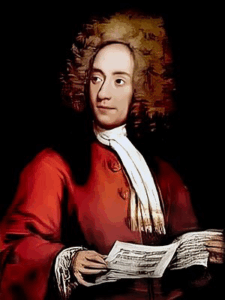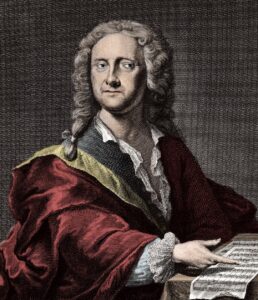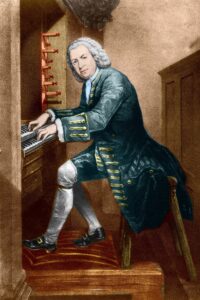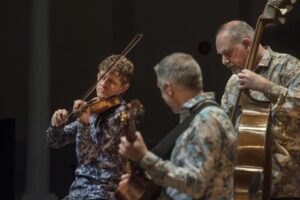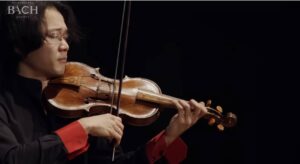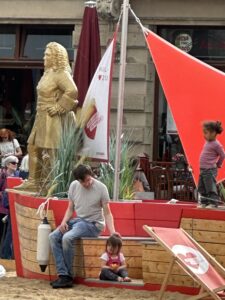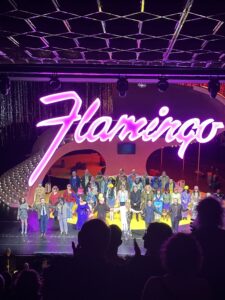I had a lot of fun preparing for and performing in the final concert for this program, including the rehearsal and presentation of a section of Bach’s BWV 199. This cantata was composed during Bach’s time in Weimar for the 11th Sunday after Trinity in 1714. In particular, I find this cantata very special because it is one of the few to feature an obbligato viola part in the sixth movement choral.
For me, there is a lot to consider when performing Bach and other earlier composers. I try to be very conscious of historical practice through my playing, and having recently started playing baroque viola at Princeton with Nancy Wilson, many major concerns with historical playing have been brought to my attention.
Principally, with baroque viola/violin, there is no chin rest or shoulder rest, so most of the instrumental support comes from the left arm, and not the shoulder and head as it is with modern instruments. As such, I find there is a greater connection between the instrument and the body, making it an extension of the arm. With this conception, phrasing becomes not only a musical idea but also a physical one. It becomes imperative to move the instrument to observe the strong and weak beats of the bar on early string instruments. In an attempt to adapt this style of playing on a modern viola, while I do not need to push up my instrument to facilitate stronger bow contact on strong beats, I try to keep this image in mind to help with general phrasing.
Further, bowing is an equally important concern for me in early music playing. I was able to use a baroque bow for this performance due to Ruth’s generosity in bringing hers from Princeton. This helped a lot with phrasing and easing many string crossings in the movement, as the bow tends to phrase strokes naturally given its tapered structure, seeing that bow directions are decided properly. In addition to this, there is an intent in baroque string playing to imitate the voice I have learned from multiple teachers (but still am far from understanding completely). It is harder to get these nuances in the sound from metal strings, but in an attempt to emulate early music playing on a modern instrument, I focused on starting entrances with “t” sounds and tried to create long “h” sounds on downbeats. I also tried to observe some inégal with repeated 16th notes, as it might have been played in the 18th century and with the heavy French influence on Bach’s writing.

Finally, the most difficult topic for me would be ornamentation. I have always struggled with finding appropriate places to add vibrato, and tend to be a little too conservative with my usage. However, given the amount of notes in this selection, I don’t think it was a significant issue here. In terms of other added ornaments, I had gone through the music and tried out a few, but ended up not adding them in the final performance. I feel slightly conflicted with Bach and added embellishments, seeing something a while back about Bach disliking excessive ornamentation in his music (what would be counted as “excessive” in this time?) and also the idea that this choral is part of his sacred music, which might be a little more strict for performers.
In total, it was such a great opportunity to add this portion of a Bach cantata to my performance history with Gabrielle and James!


